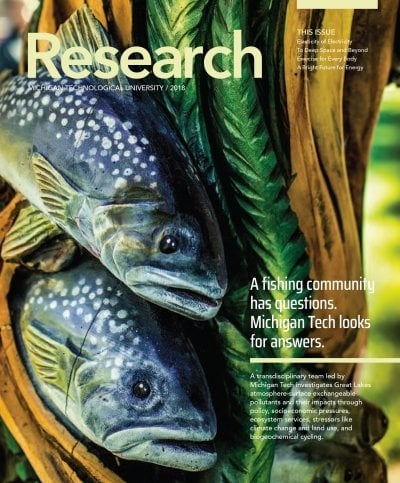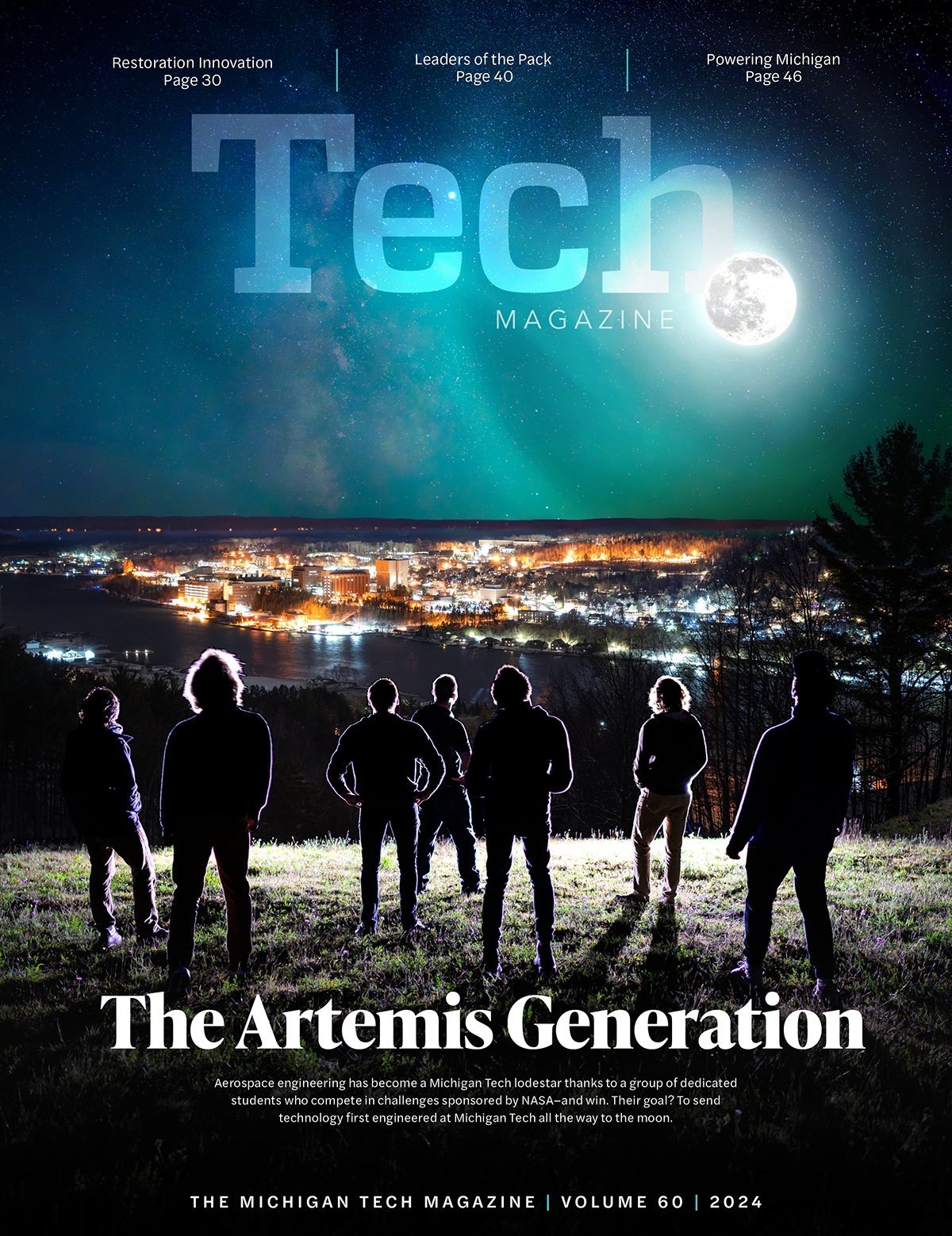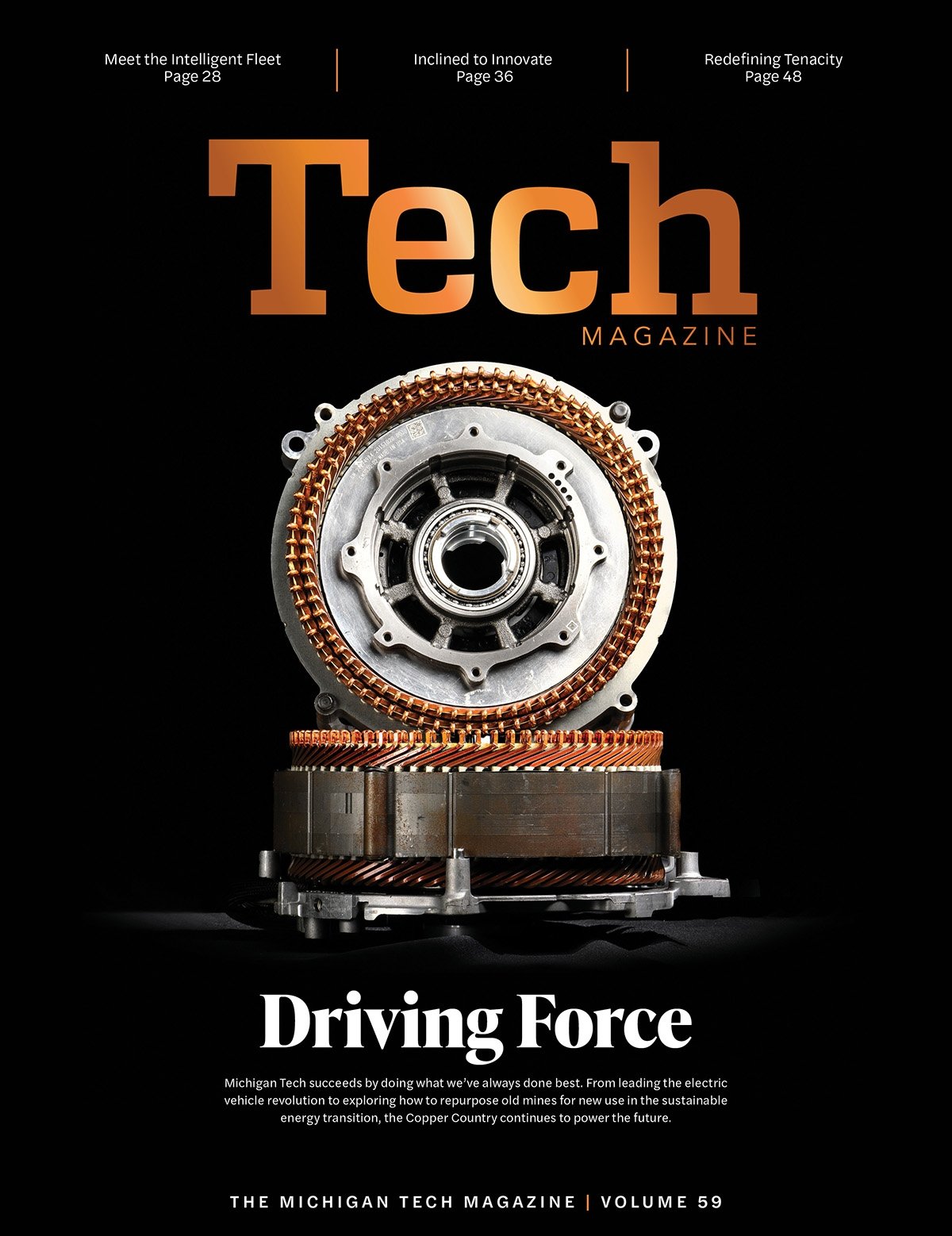-
When Can We Eat the Fish?
Answer: it's complicated. A transdisciplinary team led by Michigan Tech tracks pollutants while looking for solutions to reduce exposure for a local Indigenous community. Cold—it’s the first feature anyone notices about Lake Superior. Then there are the rocks; reds and blacks spewed by ancient volcanism and shaped by waves, granites shrugged off the shoulders of the Canadian shield. On the Keweenaw Peninsula, some of those rocks glint with copper, and hemlocks grow on the slopes up and away from the beach. Tree-covered ridges rise inland while the water stretches out—a deep, dark blue curving beyond the horizon. Sunsets, the northern lights, storm clouds seem to fill the whole sky.

On the cover: A transdisciplinary team led by Michigan Tech investigates Great Lakes atmosphere-surface exchangeable pollutants and their impacts through policy, socioeconomic pressures, ecosystem services, stressors like climate change and land use, and biogeochemical cycling.
Research is published by University Marketing and Communications and the Vice President for Research Office at Michigan Technological University, 1400 Townsend Drive, Houghton, Michigan 49931-1295.
David Reed—Vice President for Research
Cathy Jenich—Assistant to Vice President for Research
John Lehman—Associate Vice President for Enrollment and University Relations
Ian Repp—Director of University Marketing and Communications
Crystal Verran—Director of Operations
Allison Mills—Director of Research News
Vassilissa Semouchkina—Senior Designer
Stefanie Sidortsova—Director of Communications and Public Relations
Kelley Christensen, Jennifer Donovan, Cyndi Perkins, Shannon Rinkinen—Writers
Jon Halquist, Kaye LaFond—Designers
Sarah Bird—University Photographer
Ben Jaszczak—Multimedia Specialist
Megan Ross—Digital Services Coordinator
Comments to the editor
magazine@mtu.edu
Address changes
gccolaro@mtu.edu
Learn more about research at Michigan Tech online.


